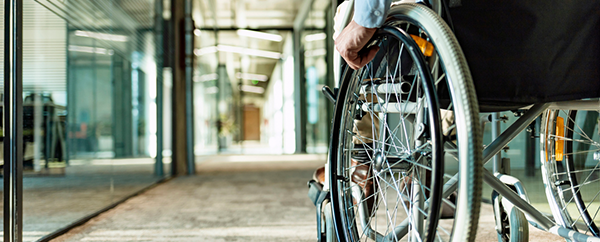
Under the Americans with Disabilities Act (ADA), any organization that serves the public has a legal and ethical responsibility to ensure that their programs, goods and services are accessible to people with disabilities on equal basis with the rest of the public. While ADA accessibility encompasses a wide spectrum of possibilities, a main component is made of up efforts to remove physical barriers when it is possible to do so, in addition to conducting periodic inspections to verify ongoing accessibility compliance. For more tips on conducting an accessibility inspection, please refer to our recent article that provides some helpful guidance on getting started. See the list below to learn more about the facility areas identified as the biggest compliance priorities.
Accessibility compliance priorities
The Department of Justice identifies the following as the biggest priority areas to ensure accessibility compliance in your facilities:
- Access to approach and entrance of a building (including parking lots, sidewalks and building egress points)
- Access to goods and services
- Access to public restrooms
- Access to other public items (like telephones or water fountains)
Depending on local rules and regulations, failure to provide compliant access to any of the four priorities of accessibility compliance has the potential to expose your tribe or tribal enterprise to legal action, potential fines or loss of reputation. In addition, non-compliance also prevents a significant part of the public from interacting with your services and your mission.
Commonly found noncompliant conditions
From a risk management perspective, the following noncompliant conditions are regularly found when conducting inspections of the four priorities of accessibility compliance:
Access to approach
Many parking lots do not contain enough, or any, ADA designated stalls. If ADA stalls are present, they may be too small to be within compliance. The slope of many parking lots, especially in compact urban environments, are also often found to be too steep, making it difficult for those with mobility-related disabilities to safely traverse the space. These issues can be remedied through the addition of ADA designated stalls, re-painting parking lot lines of existing ADA stalls to the correct size and re-grading the parking lot surface to an appropriate slope.
Common issues for building access also include doors being too heavy to open easily, or doors that close to quickly, as well as incorrect door handle types. Other access issues include a lack of ramp-access to entrances, lack of appropriate railings and general trip-and-fall hazards like cracked or elevated sections of pavement, or debris on pathways. Pathways to ADA accessible entrances can also be too narrow in sections, making it difficult for wheelchair users to enter. Good groundskeeping can address the trip and fall hazards, while other issues may require construction or installation of necessary ADA features.
Access to goods and services
Many of the previously stated issues can also affect access to goods and services. While there are many potential issues depending on the goods and services in question, some common elements include counter heights, aisle and walkway spacing, flooring surfaces, seating arrangements, light switch types, button placement for automatic systems, height of safety or emergency equipment placement, and more.
Access to public restrooms
Bathrooms, especially in older buildings, can contain multiple noncompliant conditions. Overall dimensions of wheelchair accessible stalls, the distance from center of toilet seat to wall, counter height, height of towel or soap dispensers and lack of insulation on piping under the sink area are all commonly found issues in facilities. The ADA recommended measurements must be followed exactly to make using the facilities as easy as possible to individuals with a wide range of disabilities. Unfortunately, many of these noncompliant conditions can be quite costly to correct but are nonetheless extremely important and should be addressed when possible.
Access to public items
Commonly accessed items include water fountains, public telephones, as well as internal fire alarm systems. These systems facilitate access to water, communication, and emergency notification, all which are crucial for individuals when navigating public spaces. Wheelchair users must have enough space around water fountains and public telephones to approach them effectively, and they must not be too high. Emergency notification systems, like fire alarms, must be models that can provide notification in a variety of ways, for example, visual indicators for those who are hearing impaired, audible indicators for those who are visually impaired, and so on.
It is important to become familiar with the ADA standards for accessible design and enact efforts to bring facilities into compliance. Please see the ADA Checklist for Existing Facilities for a thorough overview of what the requirements are for each of the four priorities of accessibility compliance. For more information on the ADA, please reach out to your broker or tribal risk manager.
